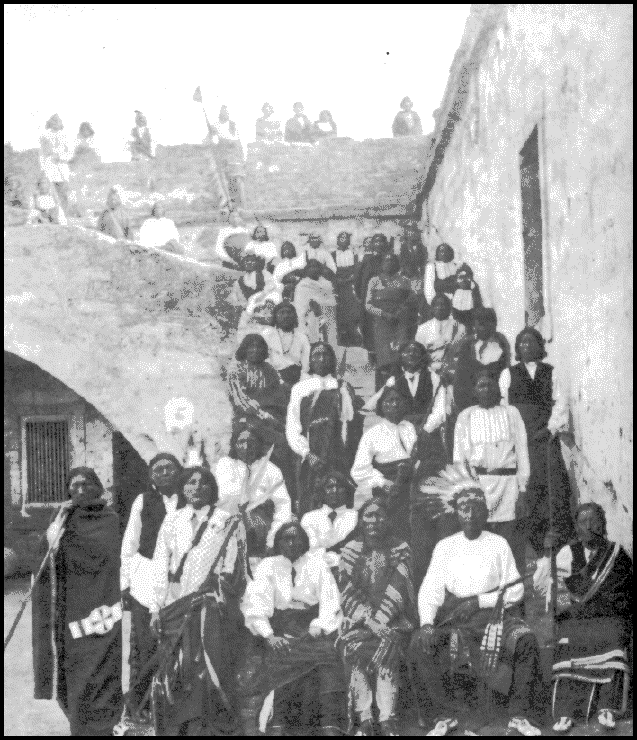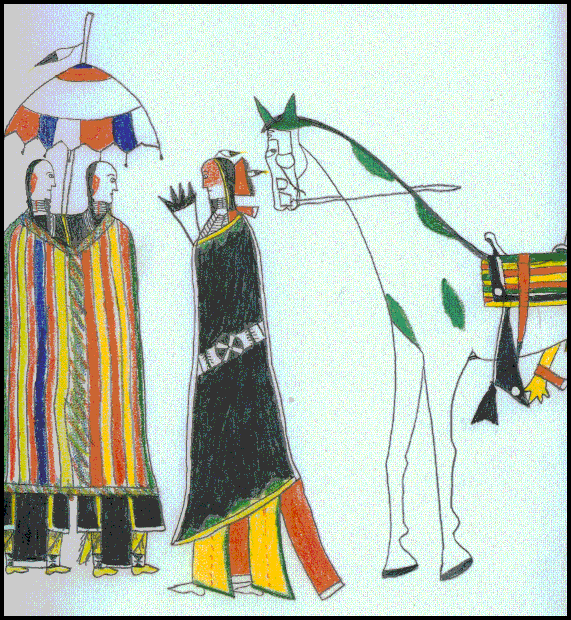
Art from Fort Marion
The Silberman Collection
Joyce M. Szabo
(University of Oklahoma)

There was one major effort by the new republic to make peace with the indigenous peoples of America. In American Creation, Joseph J. Ellis recounts the signing of the Treaty of New York in 1790, by George Washington and Alexander McGillivray, chief of the Creek nation.It was an honorable effort by Washington and Secretary Henry Knox to prevent a continuing war with the native American people. But it was doomed from the start. Not for fault of the treaty ... nor any failure on the part of Washington's administration. The flaw lay in demographics. Even as the treaty was being signed, thousands of Americans were streaming into the territory that had been set aside "in perpetuity" for the Creeks. According to Ellis, Washington would have needed to order up more than 15,000 troops just to keep the whites at bay. The wars that Washington could not prevent were to continue for another century.
Art from Fort Marion is a tragic memorial to them. In 1874, the U. S. government rounded up more than seventy leaders of the tribes of the plains and sent them off to a distant prison, Fort Marion, Florida. The chiefs --- Cheyenne, Arapaho, Comanche, Caddo and Kiowa --- were charged with stealing horses, killing buffaloes, murdering settlers. Once they arrived, they did not know if they were to die, or to stay imprisoned for the rest of their lives.
Several managed to commit suicide en route. The remainder were placed in the paternalistic care of Colonel Richard Pratt of the United States Army's 10th Calvary. Kicking Bird, Big Bow, White Man, Broken Leg, Rising Bull, Left Hand, Medicine Water and others lived at Fort Marion for three years. Pratt found uniforms for them, trained them to play soldier. To pay the way, he had them put on "war dances," mock battles, demonstrations of tribal customs for visitors. He also encouraged them to paint, draw, make pottery and drums to sell to the tourists who flocked to St. Augustine to look at "real Indians."

Seven decades later, a European immigrant --- Arthur Silberman --- began to collect the paintings and drawings from Fort Marion. They eventually ended up in the "National Cowboy & Western Heritage Museum" in Oklahoma. There are close to a hundred reproductions of this prison art here, including those by Making Medicine, Bear's Heart, and our favorite, Squint Eyes. Hunting, courtship, rituals from the plains are mixed with startling depictions of the 2000 mile journey to Florida, along with illustrations of prison life in St. Augustine. The text is extended, detailed, and sympathetic. Full-color illustrations are shown alongside several dozen photographs of the inmates, taken during the time of their incarceration.--- Richard Saturday